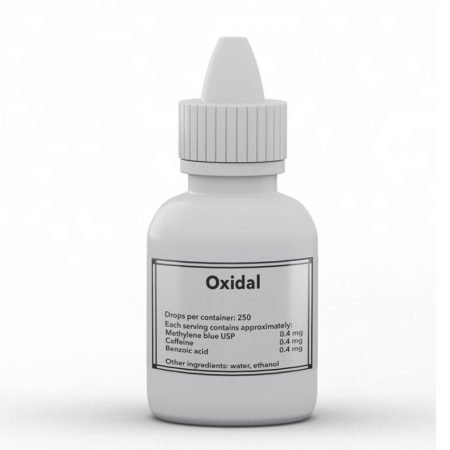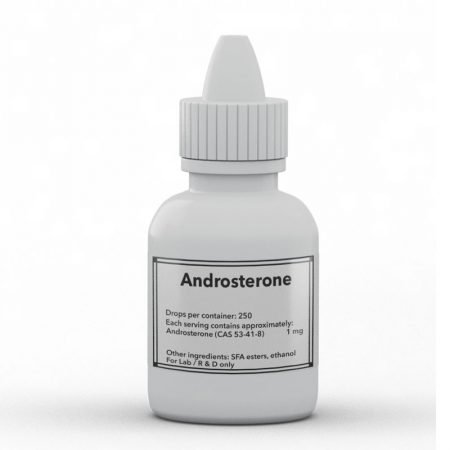Както повечето читатели на този блог знаят, настоящите препоръки на Американската дерматологична асоциация (ADA) призовават да не се излагат на слънце никакви части от кожата, освен ако тези части не са “защитени” със слънцезащитен крем. Същата препоръка се отнася и за солариумите и не прави разлика между мястото, където човек живее. С други думи, едни и същи препоръки за нулево излагане на слънце без защита важат както за човек, живеещ в Аляска, така и за човек, живеещ във Флорида, въпреки факта, че между двата щата има порядъчна разлика в излагането на слънце. Статията по-долу поставя под съмнение не само препоръките на ADA, но и самата обосновка, на която те се основават. Както се посочва в статията, препоръките на ADA приличат на тревога за избягване на грипа, когато процесът на избягване на грипа би довел до много по-сериозна и потенциално смъртоносна инфекция. Всъщност натрупаните досега данни сочат, че избягването на слънцето крие същите кумулативни рискове за здравето, както и навикът да се пуши пакет цигари на ден! Освен това общият риск от смърт е драстично по-нисък при хората с повишено излагане на слънце, дори при тези, които са имали рак, свързан със слънчевата светлина. Като се имат предвид последните новини, че слънцезащитните кремове, прилагани локално, водят до системно усвояване на токсични съставки, които се задържат в кръвта в продължение на дни, мисля, че става доста трудно да се аргументира избягването на слънчевата светлина или използването на “защита” под формата на слънцезащитен крем.
Трудно е да се повярва, че медицинската професия е толкова глупава, че да пренебрегне собствените си планини от доказателства в полза на слънчевата светлина. Склонен съм да мисля, че тук става въпрос за нещо по-зловещо. Самите идеи за “защита” и “незащитено излагане” силно напомнят на препоръките на Международното дружество за борба със СПИН или на Американската асоциация за сексуално здраве. А именно: абсолютно никакъв сексуален контакт (орален, вагинален и т.н.) без “защита”, дори сред стабилни, моногамни двойки. Независимо дали човек вярва в конспирации или не, безспорната тенденция е, че не се насърчава никаква човешка дейност без съответните препоръки или дори без лиценз от властите. Преди да се усетим, ще кандидатстваме за лицензи дори за ядене на храна, която се отклонява от официалните препоръки. А това не е от полза за никого, освен за самите хора, които определят стандартите за “здравословно” поведение. Освен това една по-конформистка общественост, която следва (не)здравословни препоръки, означава и безкрайно предлагане на пациенти за медицинската индустрия.
https://www.ncbi.nlm.nih.gov/pubmed/24697969
https://www.ncbi.nlm.nih.gov/pubmed/26992108
https://www.wsj.com/articles/not-enough-sun-exposure-can-be-risky-1405356297
https://www.medscape.org/viewarticle/861181
https://www.medscape.com/viewarticle/860805
https://elemental.medium.com/what-if-avoiding-the-sun-is-bad-for-you-4c21585180da
“…It was around 15 years ago that Dr. Matt Zirwas, an Ohio-based dermatologist, first noticed something curious about the people he was treating at his clinic. “The older patients I was seeing [who had] lots of sun damage and lots of skin cancer would be very robust, very energetic people,” he says. These were people who, apart from their skin cancers, tended to be in excellent health and taking very few prescription drugs. “But then I’d see these people who had beautiful skin and no cancers, and they were very low-energy and taking medications for all these different health problems,” he recalls. He began to wonder whether exposure to ultraviolet (UV) light, mostly from the sun, had more health benefits than he and other experts realized. When most people consider UV light and its effects, skin cancer and premature aging come to mind. And there’s no question that exposure to the sun, tanning beds, and other sources of UV light damages the skin in ways that promote aging and cancer. That’s why most dermatologists and public health officials recommend that Americans slather sunscreen on exposed skin whenever they leave the house — even in the wintertime — or take other steps to avoid sun exposure.”
“…Zirwas started reading the published literature on UV exposure and human health. In 2014, a study appeared that Zirwas says changed his thinking from “this is all kind of interesting” to “holy shit!” That study was published in the Journal of Internal Medicine, and it examined 20 years of health data collected from nearly 30,000 Swedish women. The data included questionnaires that asked women about their sun habits, as well as about their smoking history, alcohol use, body weight, education level, income, and other variables that tend to raise or lower a person’s risk for death. The study found that the risk of death from all causes approximately doubled among women who tended to avoid the sun compared to women who got the greatest amount of UV exposure — including from both the sun and from tanning beds. The relationship was dose-dependent, the study found, meaning that the more sun a woman reported getting, the lower her risk of death. The protective effect of sun exposure remained significant, even after the study authors adjusted their figures for income, BMI, smoking history, and other factors that could account for their findings. “If that study’s findings are correct,” Zirwas says, “that means protecting yourself from ultraviolet light could have the same effect on your mortality as deciding to smoke a pack of cigarettes a day.” “That study,” he adds, “made me say, ‘Oh my God, there has to be a lot more to this story.’”
“…Heart disease is the most common cause of death in the United States, according to the U.S. Centers for Disease Control and Prevention (CDC). And that study from Sweden found that a drop in heart-disease deaths among the sun-exposed women was the most significant contributor to their lower mortality rates. It’s not the only study that has drawn ties between sun exposure and improved heart health. For decades, researchers have observed what they call the “winter cardiovascular disease phenomenon.” Both in the United States and in Europe, heart disease-related deaths peak in winter and bottom-out in summer, and the swing is not subtle. There’s also evidence that some markers of heart disease rise fairly consistently among people as their location slides farther north or south of the equator.”
“…Some of this research has come from Dr. Richard Weller, a dermatologist at the University of Edinburgh in Scotland. “Without a shadow of a doubt, sun exposure is a risk factor for skin cancer,” Weller says. “But the question is, what is the risk-benefit ratio of sun exposure? Where is the evidence that sun exposure shortens life?” Weller says that this evidence does not exist. Along with the pro-sun Swedish study, he cites a large study from Denmark that found people who had been diagnosed with skin cancer actually experienced lower rates of heart disease and death compared to the general population.”
“…How could skin cancer be associated with a reduced risk of death? A dig through the skin cancer stats yields some surprises. Skin cancer is by far the most common type of cancer in the United States, according to the CDC. And for those who develop melanoma, skin cancer is serious and sometimes lethal. But the vast majority of skin cancers — roughly 99% — are non-melanoma basal cell and squamous cell cancers. Of these, roughly 80% are basal cell cancers (BCCs). While removing BCCs can be a painful procedure and one that results in significant scarring, these cancers are almost never deadly. These are also the skin cancers most closely associated with sun exposure, and that commonly show up on a person’s hands, scalp, and other sun-exposed areas, according to the American Cancer Society (ACS). Even if sun exposure were the sole cause of all skin cancers, which is unlikely, the lethality of the disease is far lower than one might assume. The American Academy of Dermatology estimates that melanoma will kill 7,230 people in the United States this year, while other forms of skin cancer will claim another 4,420 lives. Cardiovascular disease, meanwhile, kills approximately 650,000 Americans each year, per the CDC. Both Zirwas and Weller argue that if sun exposure offers even modest protection against heart disease, the benefits of sun exposure could quickly outweigh its risks…“I think dermatologists want people to have skin that is healthy and cancer-free for as long as possible,” Jablonski says. “But most aren’t looking past the skin — they’re not thinking about the global well-being of their patients.” While she doesn’t believe that taking a vitamin D supplement can fully replace the health benefits of sun exposure, she says it’s one measure that research has linked with improved health outcomes.”
“…Looking beyond heart disease, research has uncovered associations between higher levels of sun exposure and reduced rates of Type 2 diabetes. There’s also evidence linking sun exposure to a lower risk for some non-skin cancers. A 2013 study from the National Cancer Institute found that people who lived in places with high levels of sun radiation experienced an uptick in risk for melanoma, but a drop in risk for cancers of the colon, lungs, prostate, bladder, kidney, and blood. Overall, UV radiation exposure showed “a significant inverse association with total cancer risk,” the study’s authors wrote. Meanwhile, there’s evidence — both positive and negative — linking UV light exposure to immune function. Some studies have found that sunlight suppresses aspects of immune function, and that it can trigger or worsen symptoms among people with autoimmune disorders such as lupus. On the other hand, studies have found a link between greater sun exposure and lower rates of allergies, asthma, and autoimmune disorders, such as multiple sclerosis, Type 1 diabetes, and rheumatoid arthritis. Researchers have even postulated that humanity’s move indoors and away from the sun could explain the exploding rates of autoimmune disease. Sunlight also affects the way people think and feel. Research has linked UV exposure to mood and well-being benefits, and to lower levels of depression.”
“…But short of burning, he says he has no problem with people developing a tan — a position that would likely outrage many of his fellow dermatologists. “I think the benefits of [non-burning] sun exposure far outweigh the skin-cancer risks,” he says. “If you’re worried about aging, put sunscreen on your face and hands,” he says. “But the idea that we should get no UV at all — we should be debating this.”
Източник:
- Колко пресни портокала са ви необходими, за да изчистите черния си дроб от мазнини?
- Хроничният стрес понижава допамина и причинява психични заболявания
- Естрогенът и кортизолът, а не андрогените, потискат имунитета
- Инхибирането на ароматазата (за намаляване на естрогена) може да доведе до лечение на рак на стомаха.
- Потиснатият имунитет, а не вирусите (HPV), може да е причина за рака на кожата










